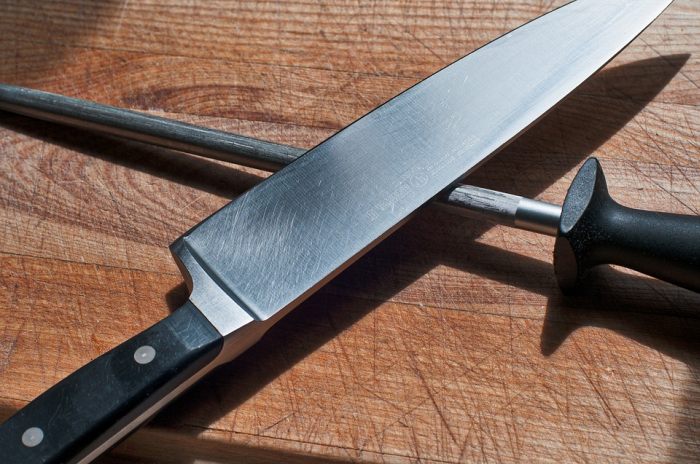
The following list of skills is pretty exhaustive, but it will be of no use if you don’t approach things in the right way. A guide which is often used is Maslow’s ‘hierarchy of needs’.
This starts with the ‘physiological’, in order: air (probably a given in any environment), water, food, shelter, sleep, clothing. Then come ‘health’ and security, and eventually at the top of the pyramid are things like spiritual fulfillment and creativity (but you’re already doing bushcraft, so you’ve got those anyway right?).
So this list is organised roughly in order of immediate need: from food and shelter to leadership and group/social needs. Happy bushcrafting!
Food and Drink
Finding Water
Water has to be the first thing on your mind in bushcraft. Learn to read the land, looking for mountains and hills which water will run off and small dips or trenches where it might pool. Water also collects in large leaves and cup shaped plants, or in holes and boles in trees.
Animals can lead you to water too: insects always nest near water and small birds always fly faster towards water than away (because of the weight of the water after a drink). Whenever taking water, take iot from the fastest moving point you can (ideally where it is white) because it will be aerated and less likely to be harmful.
Waiting for rain or just knowing when it will come: see the meteorology section) allows you time to build collection systems like tarps and big buckets, or you could even use a large, flat construction to collect dew as it condenses. You can also melt snow and ice of course, but never eat them cold as it can lower your core temperature.
Purifying and Filtering Water
Most water found in the wild is impure. While this doesn’t necessarily mean it is unsafe to drink, it is a very bad idea not to take precautions. If possible you should boil all water to kill bacteria, and filter it to remove small impurities. You can build filters with layers of gravel, sand, grass and charcoal, getting finer as the water passes down.
You can also distill water with a solar still: a clear plastic sheet over a container, with impure water in the container and a smaller cup in the middle of the water, with a weight on the sheet directly above it. Place the whole lot in the sun and the water will evaporate and condense and run into the cup, leaving the impurities behind.
Foraging
MREs and trail meals can go a long way, but after a while you’re going to need to find your own food. You should be able to get most of the food groups covered with foraging. For staples and greens there are dandelions, cattails, wild onions, wild asparagus, milk thistle and ramps, all of which can be boiled up to make decent survival stew. Nuts are a good source of protein and most can be eaten straight off the tree, or ground up into meal to thicken stew or make flour for fire baking. The Forager’s Harvest is the perfect introduction to edible plants.
Mushrooms and fungi provide even more protein and come in a wider variety of flavours, but you must be very sure of what you’re eating as some are poisonous. A good identification guide to start with is the field guide to North American Mushrooms.
Hunting and Trapping
Mushrooms and nuts can provide some protein, but in the great wilderness you will need some animals in your diet. Trapping will have a higher yield rate than hunting and take less effort in the long run, but if you want to keep moving or don’t have much time you can hunt on the go much more easily. Trapping is also generally unreliable for larger game like deer or moose. Whenever hunting or trapping make sure to have some training from an experienced professional first and obtain all relevant licenses and permissions.
Game can also provide other excellent supplies: tanned furs and hides for clothing, bags or trade, bones and antlers for tools, sinew and gut for thread and feathers for fletching arrows. Smaller game also makes excellent bait for larger targets.
Fishing
Fishing is another great way to get food in the bush, Fish are a great source of protein, but also of omega 3 fatty acids which help improve brain function. It’s also a great way to get food which needs relatively little equipment, you can fish with just a gorge hook and piece of string which fits easily in any pocket. Fish also make excellent bait for other prey or larger fish.
Cooking
Cooking on an open fire is very different from cooking on the hob at home. Learn to control the heat from the fire with water and small sticks to build it up fast. You could try building a few useful structures: a spit for roasting, a greenwood lattice for grilling, a dry stone oven for baking on flat stones. It’s also good to integrate your different skills together: try to cook as much as possible using plants and prey from your environment. The name of the game here is practice: the more you do it, the more you know what to do.
Food Storage
If you intend ever to spend much time in the bush then some knowledge of longer term food storage will be useful. Learning to smoke meats and make jerky, or to pickle and preserve fruits and vegetables is incredibly useful. A lot of the rest comes down to common sense: a deep pit makes a good fridge and high cabin in stilts will keep food stocks away from bears.
Shelter
Situation (picking a site)
The right site can halve the time and effort required for a shelter, and in the right conditions can even make it unnecessary. Choose your sight for it’s shelter value: a naturally sheltered sport like a dip or a forest clearing, as close as possible to a source of water and ideally close to a sustainable supply of wood for cooking. Try to stay out of sight of busy areas like roads or car parks, especially if wild camping.
The right combination of these, in good weather and with the right ground cover (dry and certain to stay dry) should mean that you can spend a night or two without a tent or tarp, or other shelter, relatively happily.
Building a shelter
Unfortunately most require a shelter of some kind. Don’t just rush straight in ad assume you’ll always have to build from scratch, learning to pitch your tent and put up a tarp well are valuable skills too, especially if you can do it quickly in the dark, in the rain! That said, it is very useful to learn a few different styles of bush shelters, a simple A-frame, a larger hut and maybe a snowhole/igloo or similar if you could ever end up in a cold weather situation.
Hygiene
Perhaps not the most popular subject, but nonetheless important. Really this boils down confronting the issue head on (and not just ignoring it head-in-the-sand style) and to common sense: have a plan and carry a shovel or trowel (this is an excellent one for a bug out bag) and toilet paper in a waterproof bag. Always dig a deep latrine somewhere secluded, away from your main shelter and well away from any water sources.
Fire
Knowing, Splitting and Storing Wood
Not all wood was created equal, and two equal logs will be very different to burn if one is left outside all year while the other seasons under shelter. You should learn which woods are best for what (for example, poplar wood smokes a lot, which is great for a signal fire but awful if you want a quiet night to yourself), when they should be cut and how to store them. Try to get some experience with different ways of splitting logs (different sized axes, mauls and wedges, woo grenades) and see what works for you.
A great way to remember which woods are best for what is the Firewood Poem, by Lady Congreve, which you can learn it here.

Lighting and Building a Fire
It’s useful to know quite a few different ways to light fires: some easier ones with supplies you carry with you (lighters, matches, Vaseline balls) and a few different ‘never fail’ backups like a good flint and steel or a learning a friction method like the bow drill.
As well as different methods for lighting fires you should know which structure work best for different applications: a tipi shape makes a good warm campfire to sing around, but a flat bed of embers is needed for cooking and a signal fire needs to built carefully with layers of smokey materials on top of a good-burning core.
Putting a Fire Out and Leaving no Trace
Putting a fire out is an important skill in itself and a part of the bushcraft philosophy of leaving no trace (‘take only pictures, leave only footprints’). Learn how to safely dismantle a fire. You can prepare by burning large logs with only the end in the fire, so that they can be easily pulled out later and doused. You should always bury or at least scatter the ashes of the fire and cover the fire pit over as much as possible.
Your Environment

Navigation
Finding your way is vital to good bushcraft, especially in unknown areas. Learning the proper use of a map and compass is good, but so are the principle of how they work: you can build a compass from a needle, some water and a leaf, or just any piece of metal and piece of string. Ideally you should know how to find your way without one: the pole star always shows north and Mintaka rises within a degree of true east.
Apart from absolute directions there other more situational navigational skills which are important: learning to use and read trail blazes and leave path markers for those coming to find you later.

Tracking
Tracking is the pinnacle of the art of bushcraft. A lot of people think of tracking as just being able to follow the trail an animal leaves through the forest, but it’s really a lot more: you need a complete awareness of all the variable and forces of your environment and to feel the land around you. A great aid to learning tracking are The Forager’s Harvest; becoming fluent in it’s use could make monitoring your environment a lot easier.
In short, learning tracking will improve the way you do all of bushcraft. Apart from that of course, it’s vital for finding dinner! It is widely acknowledges that the best place in the world to learn tracking is Tom Brown’s Tracker School.

Meteorology
A basic training in Meteorology will give you an awareness of the one factor which rules all of bushcraft: the weather. It determines which animals come out and when. It creates your freshwater supply. If you are the one guy in your group who can predict when it will rain or what prey will be about and when, everyone will love you.
The single best way to learn meteorology for free is Meted, a free resource run by the Met(eorlogical) Office in the UK. Met 101: Basic Weather Processes is probably the best starting point.
Camouflage
Useful for hiding from prey and predators (or other people…?) alike, camouflage is a sort of reverse tracking, requiring the same environmental awareness. Camouflage is mainly concerned with mitigating the things which make you visible, the ‘five Ss and the M’: Shape, Shine, Shadows, Silhouette, Spacings and Movement.

Horseback Riding
Before SUVs we had horses, and often a horse can still be a lot more useful in uneven or wild terrain and have great load carrying capabilities. After mastering the basics you can learn to ride hands free and do other things (like firing a bow) as you move.

Canoes, Sailing Boats and Building and Sailing Rafts
Everyone can walk, run and probably drive, but ⅔ of our planet’s surface is covered with water, so mastering that hugely expands your horizons, as well as being easy, since the river or the wind generally does most of the work! Canoeing and kayaking are the best way to get around on small rivers lakes, but out on the open ocean you’ll want a yacht and an ASA Certificate to go with it. Working with boats teaches a unique kind of self reliance: when it’s just you and the open sea for 100 Nm, you had better know what you’re doing!
Of course, on top of all of that, all of the other skills on this list apply uniquely t boats too: sea fishing is different to river fishing, nautical navigation is different from just reading a map, signalling and telecommunications use different standard etc. Learn it all, you’re going to need it out on the water!

Crossing a River
River crossings are often necessary when travelling, but making it across is a lot harder than you might think. You need to learn how to find safe fords and judge rapids (you often need to point upstream to compensate for rapids) and in absolute emergencies how to wade with a staff for support.
Your Group
Leadership and Organizational Structure
Never underestimate the importance of a good leader (or the harm that can be done by a bad one!). There isn’t really much to be taught here, more just to keep in mind that anystrong organizational structure for a group is almost certainly better than none at all. Exposing yourself to different ways of organizing groups (by doing exercises, classes and expeditions with different groups) will broaden your experience and show you what works.
Always remember that you don’t have to be a leader to get it right: it’s the standard guys who get jobs done and often the less-acknowledged specialists (craftsmen, wilderness medics etc.) whose roles are the most vital.
First Aid
The importance of first aid is obvious and cannot be overstated, especially as bushcraft happens out in the bush, a long way from the nearest hospital. Bushcraft or wilderness first aid is a little different (but will still help in other situations) and if possible you should attend a specialist course to learn it.
Wild Medicine
As well as practical first aid, it’s also very useful (and cheaper in terms of equipment!) to know the power of the plants around you. While this is most often long term, preventive medicine it can be useful for immediate first aid if necessary and improves your general environmental understanding. Culpepers Herbal is generally accepted as the standard reference.

Communication and Signalling
Signalling and communication skills are vital for bushcrafters. Simple signs (or even full sign language if you’re up to learning it) can be useful for communicating silently between hunters without spooking prey. Morse and distress signal systems can communicate over longer distances, and radio skills (like getting your ham or GMDSS licence) can be vital in disaster scenarios.
Tools and Equipment
Using your Tools Correctly
Learning to use your tools correctly will make them more efficient and keep you safer. Especially with woodwork techniques, it might be possible to learn from a local greenwood worker or carpenter, or to find a specialist bushcraft carving or tools course.

Sharpening your Tools
A blunt knife, saw or chisel is actually much more dangerous than a properly sharpened one, and much less effective too. Learn first to sharpen your pocket knife with a whetstone, it may be more difficult but it will teach you about proper profiling and edges.
Then you should learn about more complex edges, serrations and curved edges like spoon chisels and crook knives. Once you know how to do all of that, you can of course move onto something easier and more portable – the Smith PP1 is an excellent tool which can sharpen both flat and serrated blades.
In Conclusion
The word ‘bushcraft’ encompasses a huge range of different skills and disciplines. Make sure in everything to keep your eyes and ears open, balance skills against each other (don’t just think a big knife will sort everything out!) and above all be attentive to your environment.
As far as learning a skill is concerned, focusing on one or two at a time is key to getting reasonably good at it. And that’s important, because in a survival situation you cannot afford to screw up.
Other Resources
This guide is a great starting point, but there is no substitute for a wide community or first class tuition. Here are some other bushcraft resources you might want to check out:
- The Bushcraft USA Forum is a great community, full of knowledgeable folks. If you want to really test your skills, you might want to check out their Hardwoodsman Challenges.
- The Survivalist Boards are officially more of a prepping/survivalist forum, but have loads of useful info and real world experience to share.
- Song of the Paddle is a canoe camping and bushcraft forum, so it has a lot of advice on lightweight packing and tools, and self sufficiency.
Shop Related Products

$8.47$11.99

$15.26$16.95

$18.36$22.95

$13.61$22.95

$17.60$22.00

$10.23

$151.69

$12.66$16.99
No comments:
Post a Comment